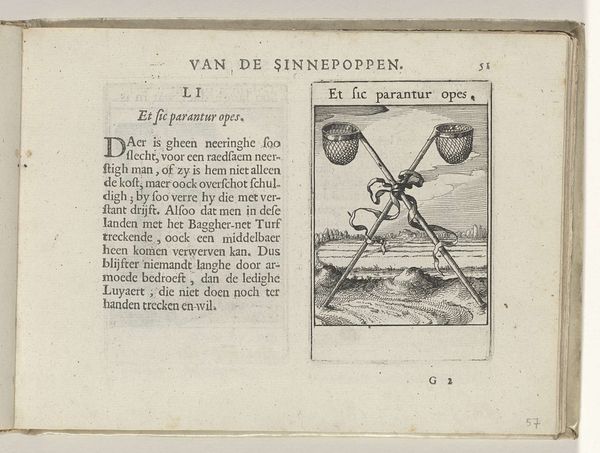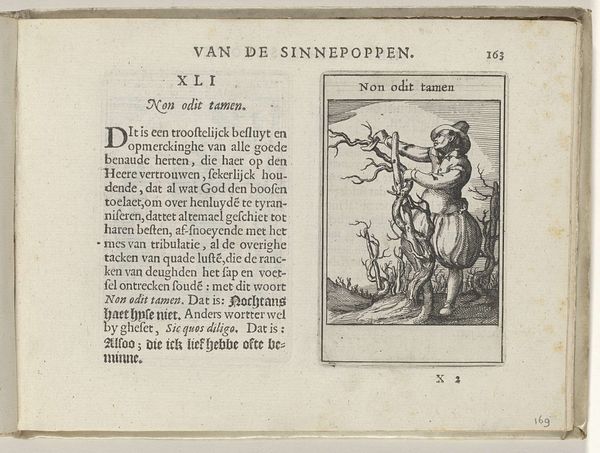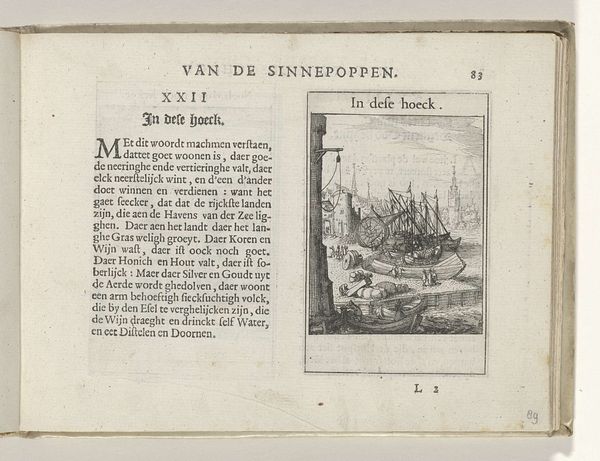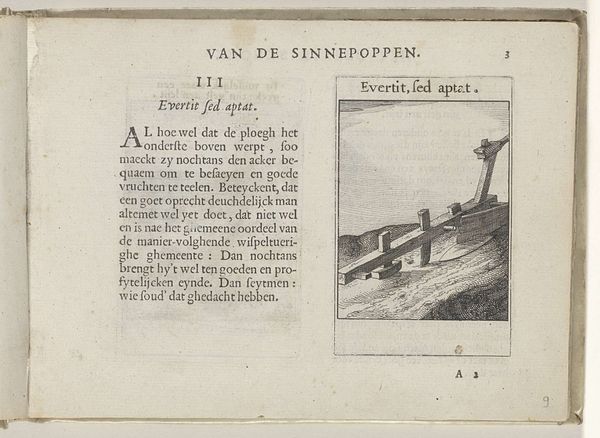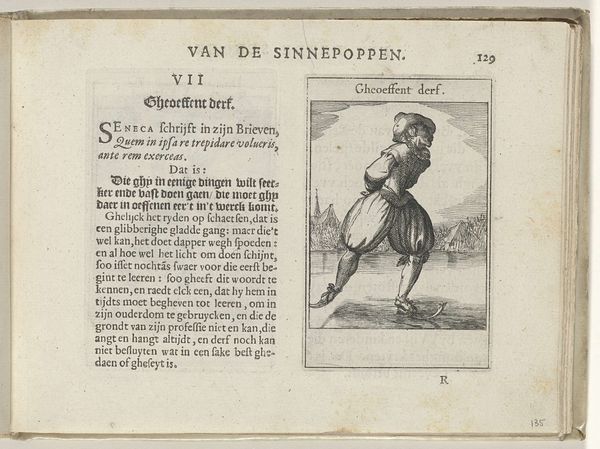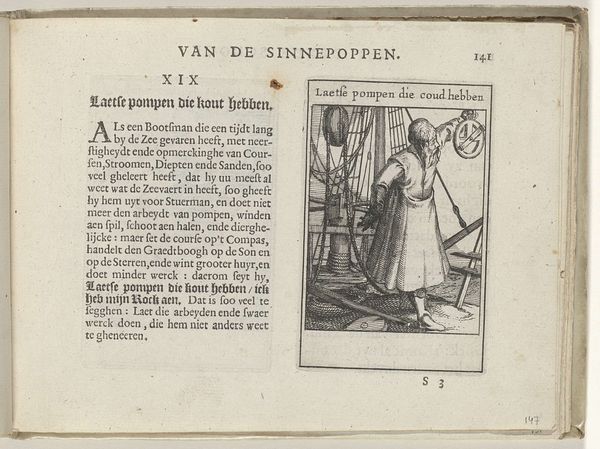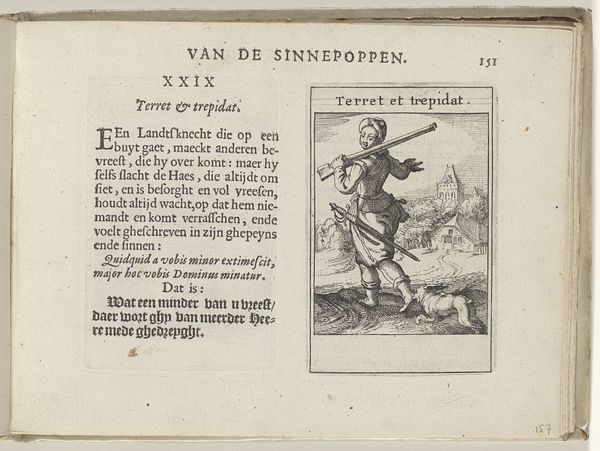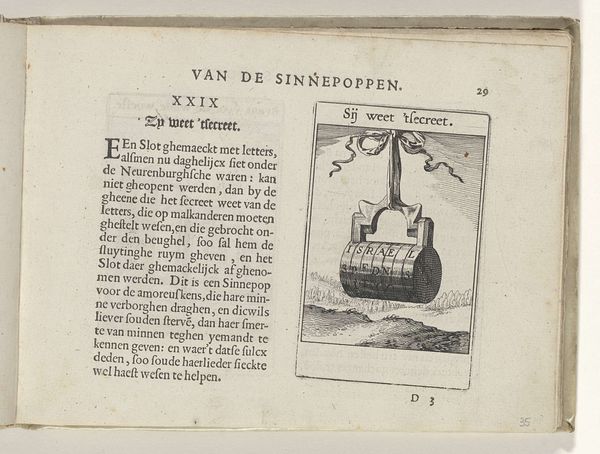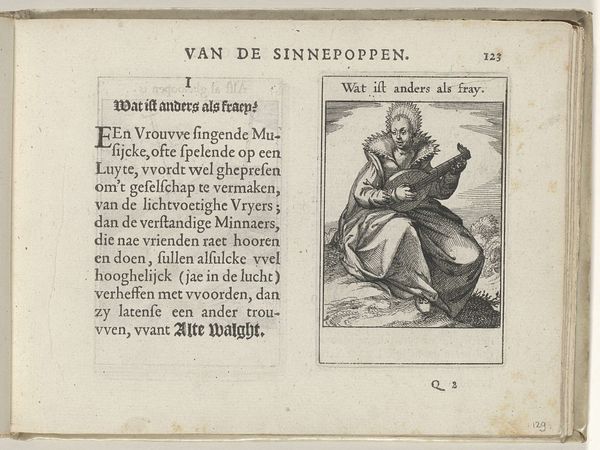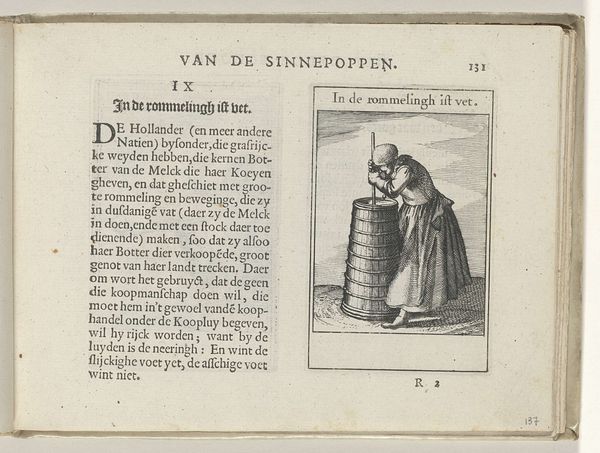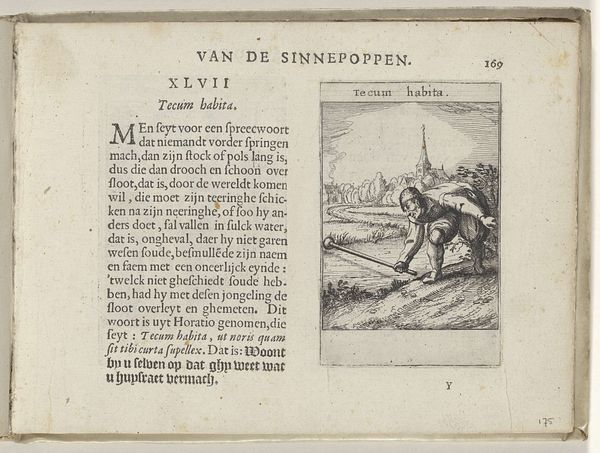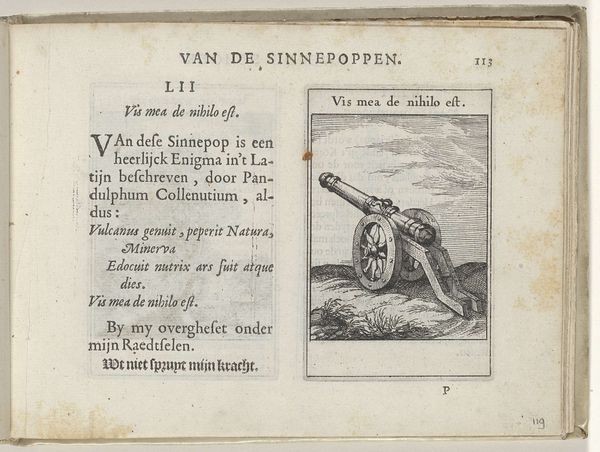
print, engraving
#
aged paper
#
toned paper
#
light pencil work
#
dutch-golden-age
# print
#
sketch book
#
personal sketchbook
#
sketchwork
#
ink colored
#
line
#
sketchbook drawing
#
history-painting
#
storyboard and sketchbook work
#
sketchbook art
#
engraving
Dimensions: height 137 mm, width 188 mm, height 95 mm, width 60 mm
Copyright: Rijks Museum: Open Domain
Curator: I’m struck immediately by the intimacy of this page, almost like stumbling upon a private thought jotted down. There’s a melancholy quietness to it, wouldn't you agree? Editor: Absolutely. This is “XLIII Iussa fortiter meum est,” a print created around 1614 by Roemer Visscher, currently held at the Rijksmuseum. It is an engraving showing an image next to a passage of text. Given the Latin phrase which translates to “what I am ordered, I do strongly," this is likely one page in a book or series of emblems Curator: An emblem... so, a little visual puzzle meant to prod at something bigger. Tell me more about these kinds of images at this moment in time. Editor: These emblems, especially in the Dutch Golden Age, were designed to be more than decoration. They were meant to instruct and reflect the values of the rising merchant class, linking everyday objects with moral or philosophical lessons. Roemer Visscher, though not an artist by trade, clearly understands how to encode power dynamics here. Curator: It is such a curious little contraption! At first glance, it almost feels like some sort of torture device! This blade clamped down so deliberately. Though, looking closer, there's this air of controlled tension rather than outright brutality. Like waiting, anticipating… Editor: Right! The illustration coupled with the passage seems to reference civic duty and fealty, with the clamped sword acting as a symbol of military capacity that should not be mobilized beyond state ordered use. You serve, but under restraint and with great discipline; you are a sword locked into place only by "hand of the master," so that power and authority is both implied and severely restricted. It suggests concerns about mercenaries, or rogue military forces which can be viewed in relationship to larger questions of colonial governance. Curator: So fascinating how something so contained can speak volumes about order and restraint during that time. A tiny, sharp echo of larger power structures… The aging of the page adds another layer, like a whispered secret from centuries ago. Editor: Indeed. What begins as a quaint scene quickly reveals complex undercurrents reflecting the societal anxieties and aspirations of the time. A deceptively simple image prompting endless exploration.
Comments
No comments
Be the first to comment and join the conversation on the ultimate creative platform.

